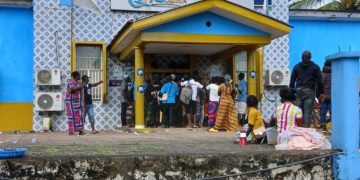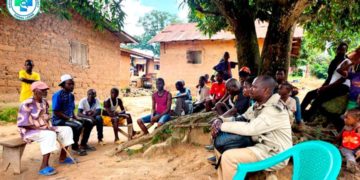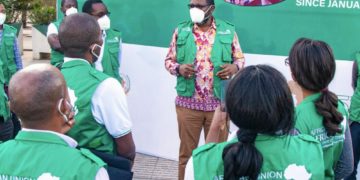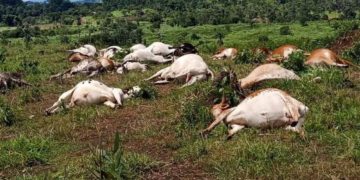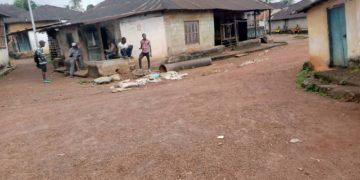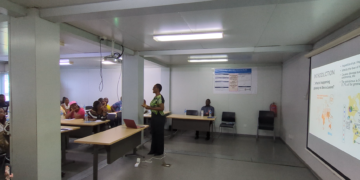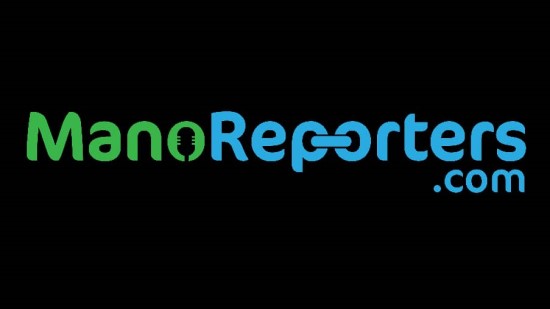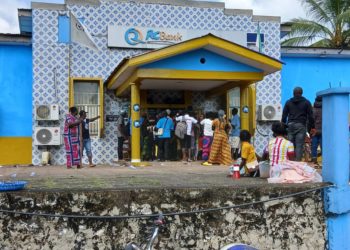By Kemo Cham
In Kamayimbo Village, about 17 miles outside Kalaba, the headquarters of Koinadugu District, Nurse Yegbe Thoronka and her team of vaccinators are out and about in search of eligible children to be administered with the oral poliovirus vaccine.
“No woman wants to have a baby that’s deformed. Nobody can be happy about that. So we are encouraging every parent to have their kids vaccinated,” she said.
This is part of Round Two of the supplementary mass polio vaccination campaign conducted by the Sierra Leone government and its partners from June 8 to 11, 2024. It’s a response to a resurgence of polio across West Africa, which has been battling to contain the spread of the virus that mostly affect children.
Polio affects the nervous system, leading to paralysis and, in extreme cases, death. The virus is highly contagious and can spread in a number of ways, including contact with an infected person, contaminated food or water, or inhaling airborne droplets. People can also contact the virus through poor handwashing.
The first round of the vaccination campaign was conducted in the second week of May, 2024. It’s a synchronized campaign involving six west African nations, including Sierra Leone’s Mano River Union neighbours – Liberia, Guinea and Cote d’Ivoire. The other two countries are Burkina Faso and Mali.
According to the World Health Organization (WHO), these are among 12 countries in West and Central Africa that have been experiencing sporadic outbreaks of the virus in the last few years.
The goal of the synchronized response is for all children in these countries to be reached at the same time, explains Dr Thompson Igbu, WHO Sierra Leone’s vaccine lead.
“So that in case of cross border movement, such children would not be missed,” he explained at a press briefing ahead of the launch of the first round.
Sierra Leone last detected a strain of poliovirus in March 2024 in the slum community of Mabela, prompting this campaign.
According to WHO, of the three strains of wild polio virus – types 1, 2 and 3, types 2 and 3 have been eradicated worldwide.
As at 2022, endemic wild poliovirus type 1 remained in circulation only in Pakistan and Afghanistan, where Islamist inspired unrests, coupled with misinformation, have deprived millions of children from having the lifesaving vaccines. Yet, epidemiologists warn that with a single case of the poliovirus anywhere in the world, no country anywhere is safe.
An illustration of this was the outbreak of wild poliovirus type 1 in two Southern African countries – Malawi and Mozambique – which was declared over on May 14th, 2024. That strain of virus was traced to Pakistan.
Dr Jammal Ahmed, Polio Eradication Programme Coordinator for the WHO Africa Region, told ManoReporters that the outbreaks in Malawi and Mozambique haven’t in anyway changed Africa’s status as wild polio virus free.
“Our objective is to completely and 100 percent eradicate polio globally. And to achieve that, we go through various stages,” he said via a zoom interview.
Elsewhere, it’s the vaccine derived strains, also known as circulating vaccine derived poliovirus, that have been keeping the global health community busy.
Data shows that 23 countries in the WHO Africa region recorded cases of the vaccine derived poliovirus between 2020 and 2021. Sierra Leone recorded a total of 34 confirmed cases within this period.
But unlike its neighbours, Sierra Leone has not recorded any human cases of the virus since 2020, when it was certified wild polio free.
This latest detection of a strain of the virus in the Mabela sewage system came shortly after the detection of the less dangerous type 3 vaccine derived poliovirus in a child in Kambia District.
Dr Mohamed Alex Vandi, Deputy Director General of the National Public Health Agency, said the collaborative approach is crucial for Sierra Leone to maintain its polio free status. He stressed that all the cases so far detected in the country were either environmental samples or linked to neighbouring countries, as was the case with the Kambia incident, which was traced to Guinea.
Both Burkina Faso and Mali are going through civil unrests, which have affected their immunization coverage rate. And both Guinea and Liberia share border with Cote d’Ivoire, which in turn shares borders with those restive countries, leaving Sierra Leone vulnerable by association.
“For us to conduct a very effect campaign, it has to be synchronized,” stressed Dr Vandi, adding: “If we go in silo – Sierra Leone organizes its campaign different from Guinea and Liberia does their own…we will never get it right.”
Unicef is providing the vaccines through the global vaccine alliance – Gavi. Cindy Thai Thien Nghi, Social and behavioural change specialist at the Country Office of the UN children’s agency, emphasized on the importance of the collaborative approach. She noted that despite the progress in the last 14 years of keeping wild poliovirus at bay, Sierra Leone is still below optimal level of vaccination coverage, hence the need for sustained efforts.
“The recent detection of the poliovirus in the environmental sample serves as critical reminder that we must still come together and intensify efforts. And we can only prevent polio when we reach herd immunity through comprehensive vaccination,” she said.
Health authorities say the target is to cover at least 95 percent of eligible children, irrespective of their vaccination status.
However, a major threat to achieving this is the effect of miss and disinformation on public acceptance of the vaccine, which was seen in display during round one of the campaign.
Ahead of commencement of the second round campaign, District Medical Officer Dr Steven Fornie, anticipated a repeat of what he described as a successful first round campaign.
“In all the campaigns we have been doing, Koinadugu has been excelling and has been contributing maximally to the country’s overall percentage coverage, from Covid-19 to now. My expectation is going to be…99.9 percent coverage,” he said.
As in the first round, 1.5 million children, from zero to 59 months, were targeted. This is the category of children said to be most prone to the viral infection.
Dr Fornie presides over a coordination meeting on Day Two of the exercise at the district health management team office in Kabala. Along with representatives of partner organizations like WHO and Unicef, they reviewed the previous day’s activities, highlighting both progress and challenges.
In a nearby room, the vaccines are sorted out, as the teams prepare outside to deploy to their respective locations.
Kamayimbo was the first point of call for Thoronka’s team on day two. But it’s just one of three communities they have to cover by the end of the day. Some of these communities are in hard-to-reach areas and they are long distances apart.
From Kamayimbo, they were headed for Kakuthuhu, and then Kakumankoro.
“We can’t have a bike at this point. The one that brought us to this point has returned. So we are going to walk. The people are waiting for us. We sent message since yesterday and this morning we called to confirm our arrival. We don’t want any parent to miss the vaccination,” she said.
Along the way to Kakuthuhu, the team met with a mum and her baby. She was vaccinated, strapped to her mum’s back.
It eventually arrived at Kakuthuhu just on time at the end of service at the Roman Catholic Primary School of Kakuthuhu, where faithful from nearby communities worship.
The team set up station outside, as parents of eligible children line up to have their kids vaccinated, at the backdrop of the melodious drumming sound of the popular Sierra Leonean composed gospel song – ‘Tell am tenki’ (Praise God).
“I am happy for this vaccine because it helps to protect my baby from paralysis. I wouldn’t be happy if he is paralyzed,” said Mabinty Koroma, a young mother, after her son was vaccinated.
Kelleh Koroma couldn’t risk missing the opportunity and had to accompany his child himself, with the unavailability of his wife who usually accompanies their kid for medical checkup.
“Praise be to God. Our children are now safe, thanks to this vaccine. We are also grateful to the government,” he said.
The school’s head teacher, Ibrahim Sorie Koroma, was the vaccination team’s contact on the ground. He had to go round the village to mobilize the people ahead of time.
Koroma was happy about the turnout. He said the outreach was helpful in that it saves a lot of lives of babies whose parents couldn’t have afford to go to health facility for the jab.
The nearest such health facility to Kakuthuhu is Lenkekoro, which is eight miles away.
“It would have been too long a distance for parents to take their children to Lenkekoro for the vaccine. Even when the kids fall sick here, it’s difficult. It costs NLe50 per person for transportation. It’s good that they brought the vaccine to us,” he said.
And Nurse Thoronka is happy too about the turnout.
“We are happy that we came to this church. We vaccinated about 25 children. It makes the job easier for us. But we still have to go from house to house, because not everyone comes to church. Some people are Muslim,” she said.

